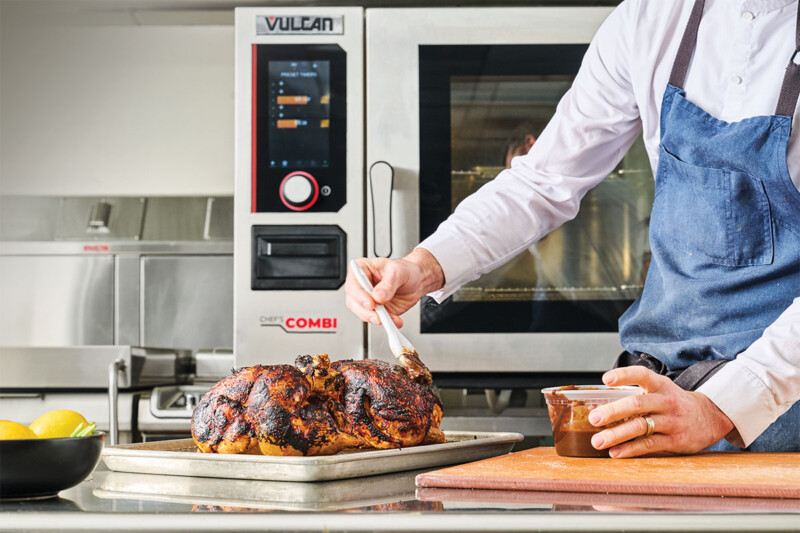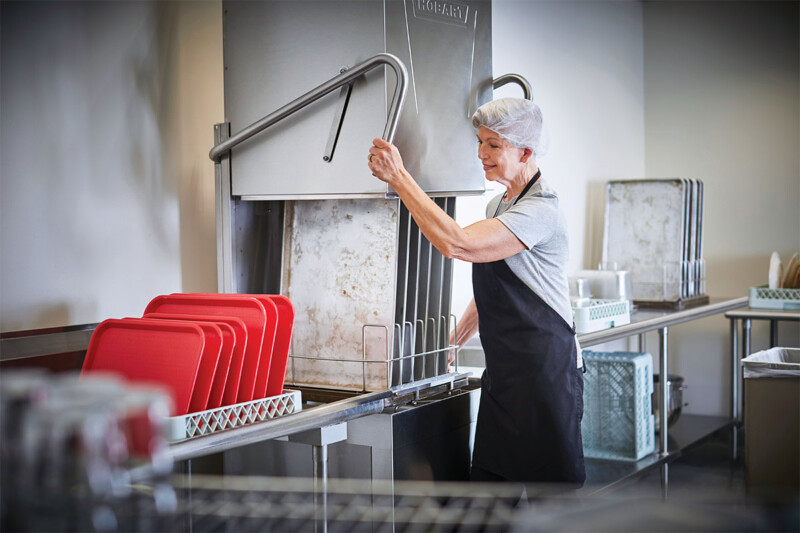Tour Today’s Clever Combi Ovens
New combi ovens work smarter and harder, making them a go-to cooking appliance in today's environment.
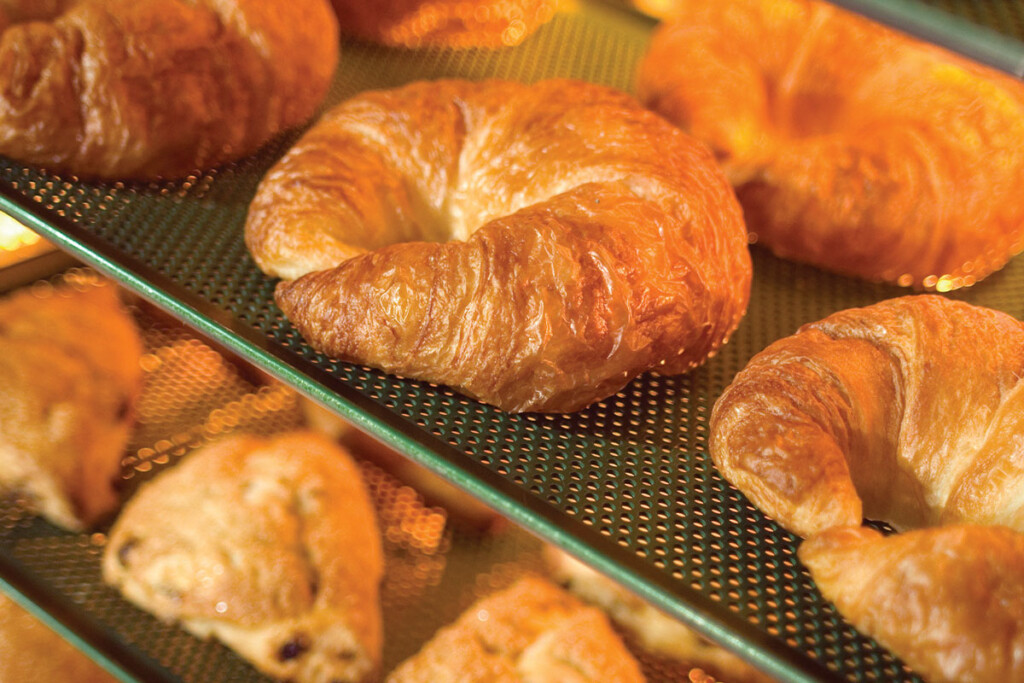
Head spinning yet? Sure, it was hard enough figuring out where, how and when to get a COVID-19 vaccination for you and your employees. But depending on the state(s) in which you operate, you probably closed some stores twice, reopened twice, reconfigured your menu for takeout and delivery items, and expanded from 25% indoor dining to 50% in the past year. Unless, of course, you’re in the handful of states that allowed unrestricted dining indoors for most of the pandemic. In other words, you’re still trying to figure out the best way to run your business. Or what equipment to order. But even though orders for the Buffalo wings and sweet potato fries you added to your takeout menu are growing fast enough to warrant an investment in new equipment, which makes more sense: spending $18K for a two-unit, 50-lb. fryer or $18K for a new combi oven that will cook not only those wings and fries, but probably everything else on your menu and then some?

A well-running combi starts with a quality installation. Combis need water hookups, a floor drain and the right power or gas hookups; plan ahead. Courtesy of Rational.
Or, you have an opportunity to expand your delivery business in another area by sharing space in a ghost kitchen, but you’ve only been allotted 800 sq. ft. How are you going to produce your menu in that space? That question becomes even more meaningful when you consider that your existing employees, or inexperienced new hires, will have to operate, clean and maintain that new equipment. Luckily, the latest combi ovens are smarter, work harder and are easier to keep clean than some of the other equipment in your kitchen. They often save energy, water and labor, too. So, your investment will pay for itself a lot faster.
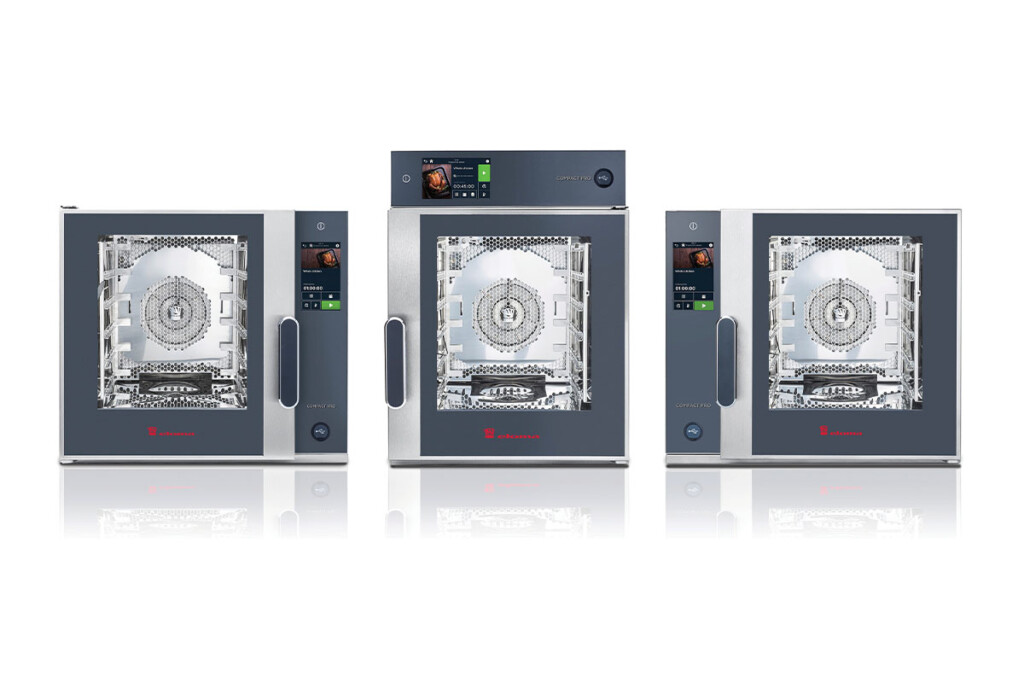
Certain models come with fully automatic cleaning systems as well as simple hand showers for a quick rinse of the cavity. Courtesy of Eloma.
So, what makes the new crop of combi ovens so special? A combination (pun intended) of brains, brawn, efficiency and applicability.
NEXT-LEVEL INTELLIGENCE
No one’s saying restaurant employees aren’t smart. But the less they have to think about, the more they can focus on getting food out to customers the way it was intended. The smarter the equipment is, the less often employees have to check to make sure it’s cooking food properly. We’ve told you before that combi ovens are high-tech and super versatile, but this latest crop of advances is like a class of college graduates that have gone on to Ph.D. programs. Touch screens, for example, more closely resemble smartphone screens and act like them, too. Capacitive screens allow users to touch and swipe with gloves on, and many allow chefs to program them with drag-and-drop capabilities. For unskilled or unfamiliar employees, functions arranged on screens like smartphone apps make it even easier to navigate to the right function, recipe or program.
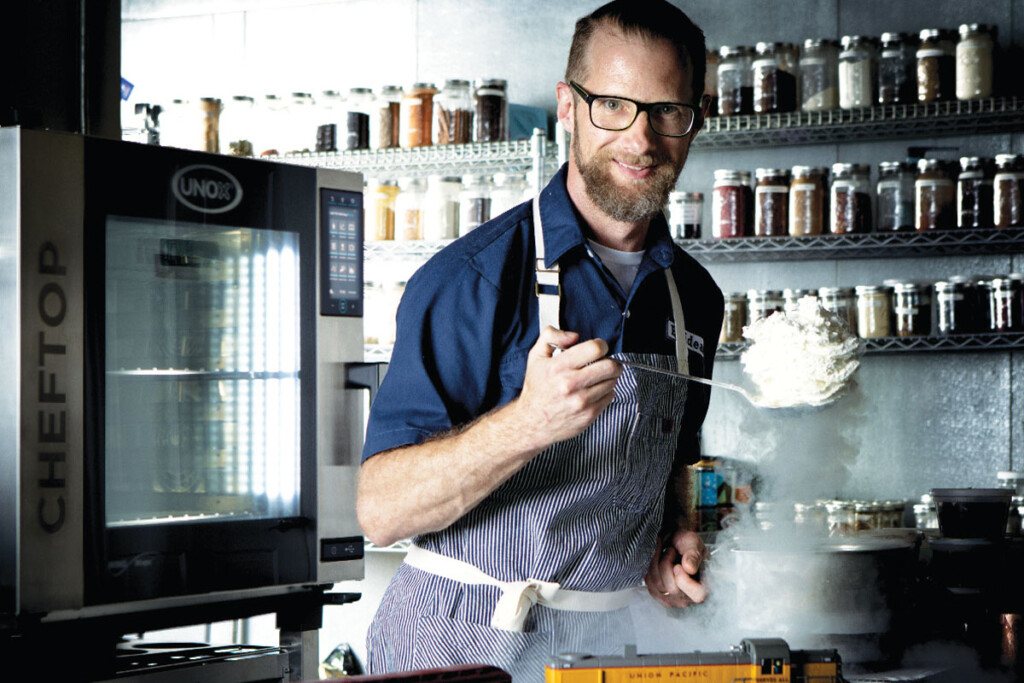
Combi ovens can help chefs, such as Phillip Foss (pictured), express creativity. Courtesy of Unox.
In addition to storing often-used recipes so employees can cook with a single touch, for example, many models also allow users to cook by product (e.g., chicken, broccoli, etc.), cooking type (bake, broil, braise, fry, etc.), oven function (bake, steam, proof, etc.) and even by cooking result (desired degree of doneness or browning).
PROBLEM-SOLVING CAPABILITIES
More models provide ways to cook multiple products in stages, guiding users through the process, showing them what items can be cooked together. Then it alerts them when it’s time to either load products or unload them, depending on whether they want everything to start or finish cooking at the same time. The ovens automatically adjust cooking time based on the load size and the time the door is opened for loading and unloading.
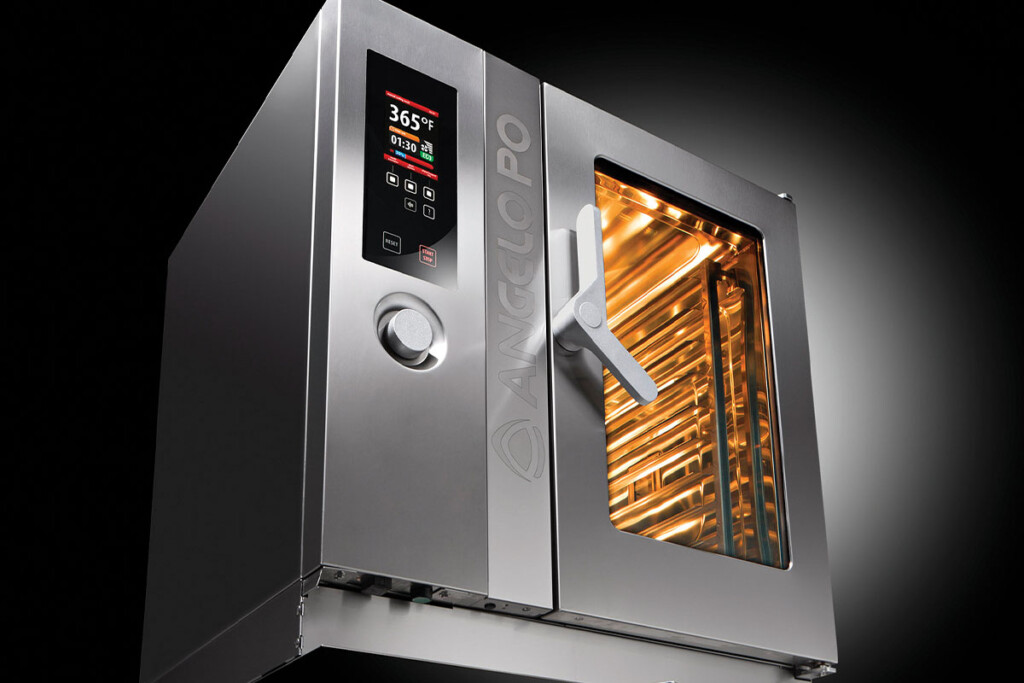
Energy Star-rated models are about 20% more energy efficient than standard models. Courtesy of Angelo Po.
One maker now offers a sensor that scans each individual load while it’s inserted and using artificial intelligence, identifies each load, shelf by shelf, and chooses the appropriate cooking program. Employees don’t even have to push a button or call up the right app or icon on screen. Other models use AI to learn your preferences over time and automatically adjust cooking programs for often-cooked items. As an upgrade over just a USB port, many models are now connected via Wi-fito the internet. Headquarters can monitor the actual cooking, cleaning and maintenance of each combi oven to get the most productive use out of it. Connectivity also allows remote diagnostics, recipe downloads and HACCP data collection. Data collection also can help you refine recipes, inventory control and purchasing.

Many combis connect via Wi-Fi to the internet; the technology lets you monitor the unit from a regional headquarters, for example. Courtesy of Convotherm.
All of these improvements make it easier to produce more food, and more types of food, more consistently, all while saving labor.
STRENGTH AND POWER
Equipment does you no good if it isn’t reliable, and here, too, makers find ways with each new model to make combi ovens more dependable. A couple of manufacturers, for example, now use 316L stainless for their oven cooking chambers instead of the standard 304 stainless. The so-called “marine grade” stainless has 2%-3% molybdenum, which makes it more corrosion-resistant to salt and chlorine (which is why it’s often used for all types of equipment on or near saltwater). The alloy protects the oven interior from harsh cleaning chemicals and salt from food. Use of construction methods such as a spaceframe chassis on combi ovens, like those used on many cars and motorcycles, strengthens units against wear and tear in a kitchen, especially the constant opening and slamming of the oven door. Triple pane glass in the door not only provides insulation against heat loss, but strength there, too.
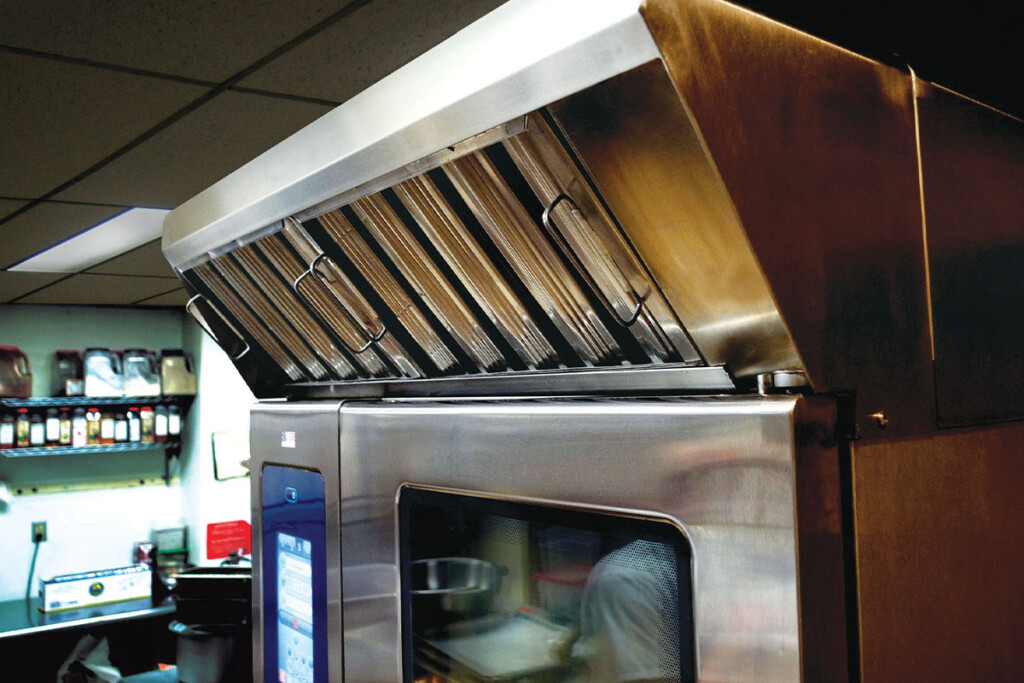
Ventless hoods let you place a model out from under a traditional hood. Courtesy of Alto-Shaam.
Smarter design, like condensation drip trays along doors, better gaskets and boilerless steam generation, keeps parts from corroding and helps extend the life of the combi oven. More thorough and more intelligent cleaning cycles help maintain not only the cooking chamber but parts like fan blades and heating elements, too.
Saving Energy and Time
Many more combi oven models now meet Energy Star requirements, which on average are 20% more efficient than their counterparts. But when you’re looking at the numbers, don’t just consider how much electricity or gas and water you can save with an Energy Star-rated model. Compare those numbers to what you’d spend on utilities for the griddle, convection oven, steamer and fryer you’d have to use instead. Some combi makers report savings of up to 70% in energy use, 50% in time, 20% in raw ingredients and 95% in oil over conventional cooking equipment. And more compact designs like mini combi ovens (search “Sizing Up Mini Combi Ovens” at fermag.com), a new 22-inchwide stacked double oven from one maker and a new modular oven from another save up to 30% in floor space. Essentially, combi ovens do more with less.
More models also offer self-cleaning systems. Several manufacturers now supply more cycles on their auto-wash systems, with some as fast as 12 minutes. At least one maker even has sensors to detect the level of soil and grease inside the oven, and turns on the appropriate cleaning cycle. Most now also have some form of auto-dispensing of cleaning and descaling chemicals, in either liquid or tablet form so employees don’t have to wear protective gear to clean the oven or even load the chemicals in some cases.
Finally, many models can pair with ventless hoods; the key benefit is that they can go practically anywhere. Crews don’t have to install them under a CKV hood. That can potentially save you even more on energy costs. Just take into account that some ventless models may put an extra load on HVAC systems because they run at higher temperatures than their vented counterparts to have enough heat to catalyze the grease produced in cooking. Crunch the numbers in labor, energy and space savings, as well as productivity and throughput, and a combi oven might make more sense than investing in more conventional equipment.
Choosing a Combi
While many combi ovens will perform in a similar fashion, finding the right model for your operation isn’t quite so simple. Following a few guidelines, though, will narrow your search. Here are some key factors to consider:
- Size. Sizing your oven means not only picking one that accommodates the kinds of hotel or sheet pans you use most often, but also the production capacity you need. Manufacturers can help.
- Ease of use. How easy is it to program and customize for your menu, and how easy is it for employees to operate? Are categories (e.g., food types, oven functions, cooking types, etc.) well organized? Are apps intuitive and easy to understand? Once you’ve seen a demo, have your team play with the controls to see how easy it is to navigate the oven’s capabilities.
- Energy efficiency. Look for an Energy Star-rated model, and compare operating costs to both those of competing combi ovens and conventional equipment the unit could replace.
- Footprint. Think about where you plan to put a combi oven, but don’t forget breathing room. Some require more clearance than others. One maker’s unit even has a zero-clearance design.
- Self-cleaning. Auto-wash systems will save you a ton of time and labor cost.
- Warranty. As always, read the fine print. Find out what the warranty will and won’t cover, and make sure the manufacturer’s service network covers your operating territory.
Combi Oven Know-How
Combi ovens are high-tech. Follow these steps for a smooth experience:
- Check your water. Water quality varies greatly from one location to another. Most manufacturers won’t honor warranties for certain repairs unless your water quality meets specific standards (usually spelled out on spec sheets). Get your water tested, and install the proper water filtration system.
- Install it properly. Combi ovens need as many as three or four water hookups, a floor drain close by, and the right power or gas supply hookups. Once you pick a model, use one of the manufacturer’s approved installers to get it up and running correctly.
- Think long term. Look at the total cost of ownership instead of just price when you buy. Investing in a quality combi oven can end up costing less in the long run, enhancing profitability and ROI.
- Talk to reps. Manufacturers have experts who can help with everything from understanding true oven capacity and choosing the right size for your needs to getting the most out of an oven’s features.
From Ventless to Connectivity
Take a tour of the latest combi oven models, technologies, or accessories from manufacturers.
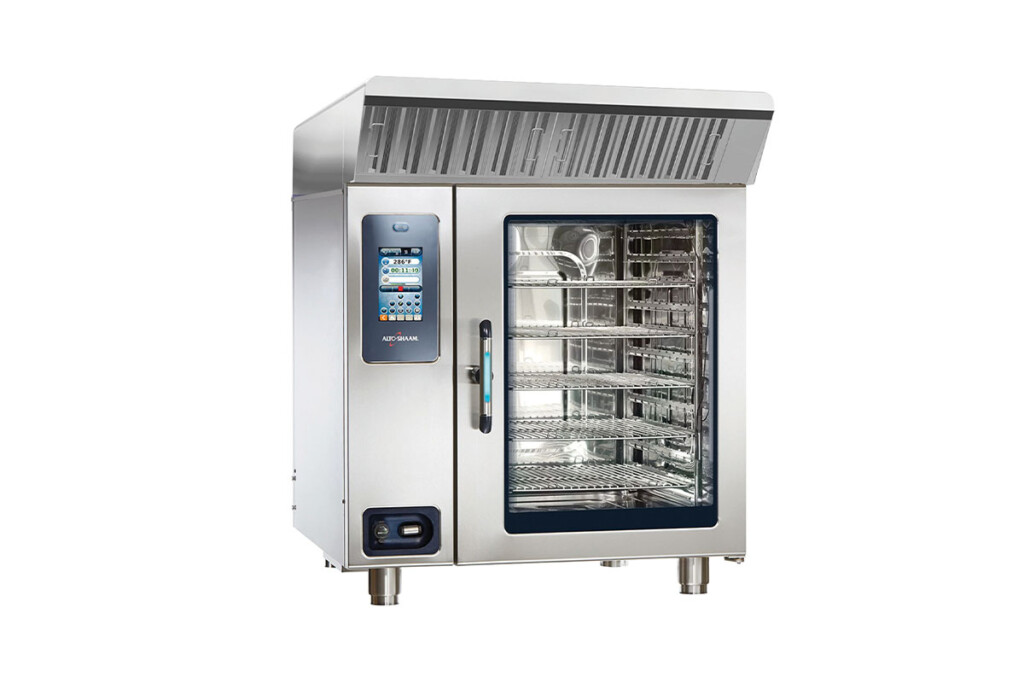
Alto-Shaam
Feature
Ventech Condensation Hoods (shown on CTP10-20)
Description
The ventless hoods let you place a Combitherm combi oven practically anywhere in the kitchen, and help save on installation costs since they remove the need for a traditional hood.
Website
alto-shaam.com
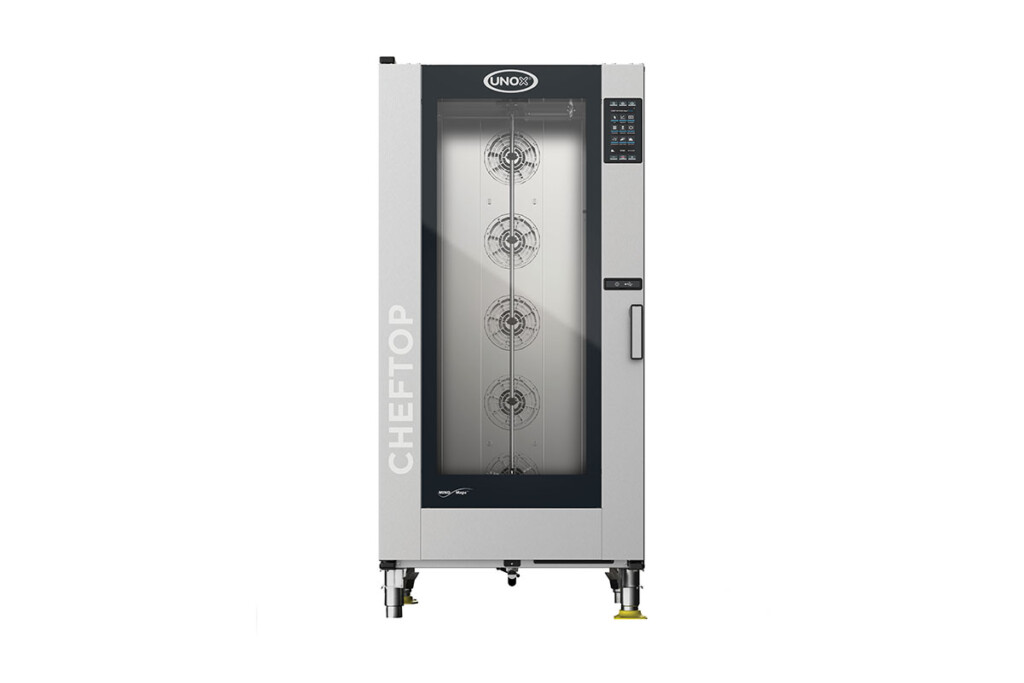
Unox
Model
Ventech Condensation Hoods (shown on CTP10-20)
Description
Holding 20 sheet pans (18 x 26), the unit features a space-frame chassis and 316L stainless construction, and a technology that estimates how dirty the oven is and suggests an auto-cleaning mode.
Website
unox.com

Eloma
Model
Compact Pro
Description
Choose from three cavity sizes, control positions (left, top or right) and cooking modules, then choose from two operating systems and cleaning processes.
Website
eloma.com
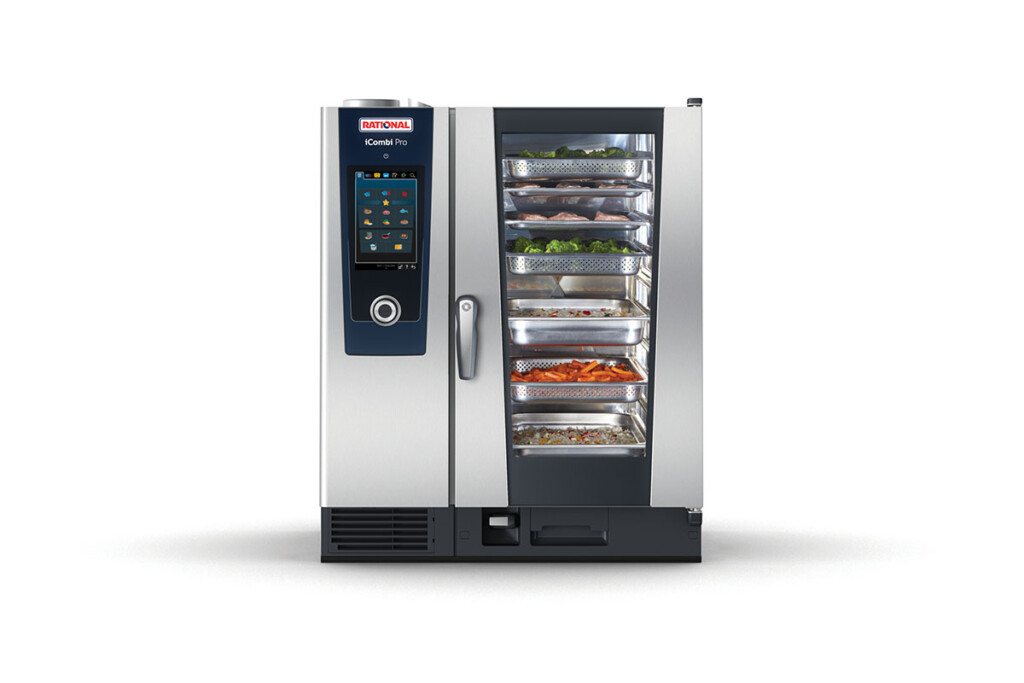
Rational
Model
iCombi Pro
Description
iProduction Manager indicates which foods can be cooked together, and can either have everything ready at once, or start cooking everything at the same time.
Website
rational-online.com
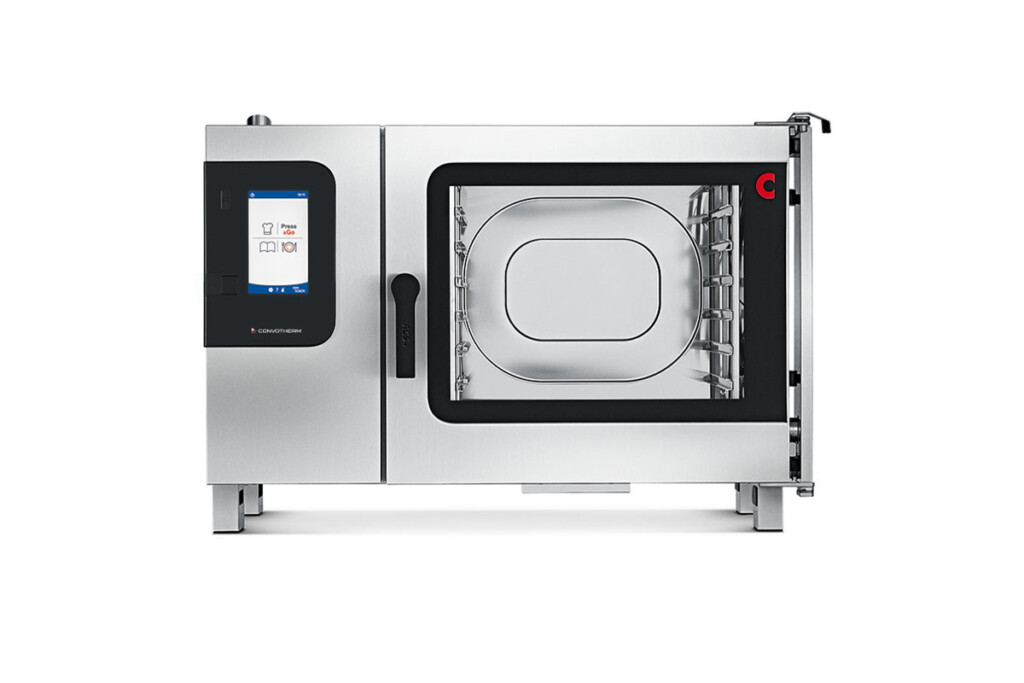
Convotherm
Feature
KitchenConnect (C4eT 6.20 ES shown)
Description
The technology connects combi ovens to the internet and helps operators with management of reports, assets, menus, quality and service.
Website
convotherm.com
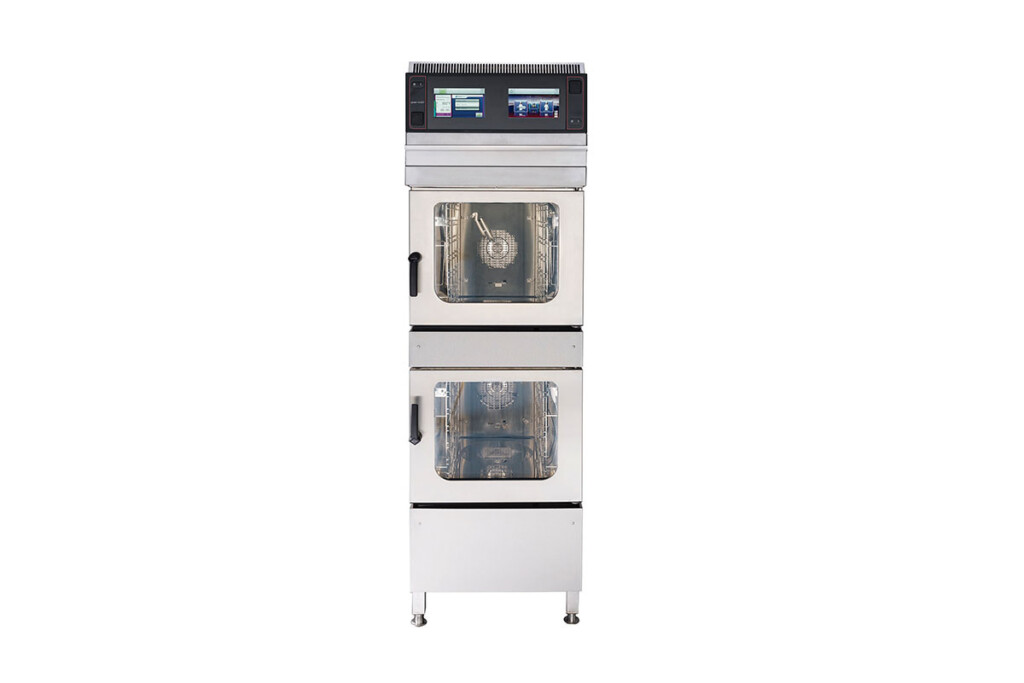
Henny Penny
Model
FlexFusion Combi Oven SpaceSaver Plus Team
Description
The compact combi oven measures less than 22-in.W and others the versatility of two separate cabinets in one integrated platform.
Website
hennypenny.com
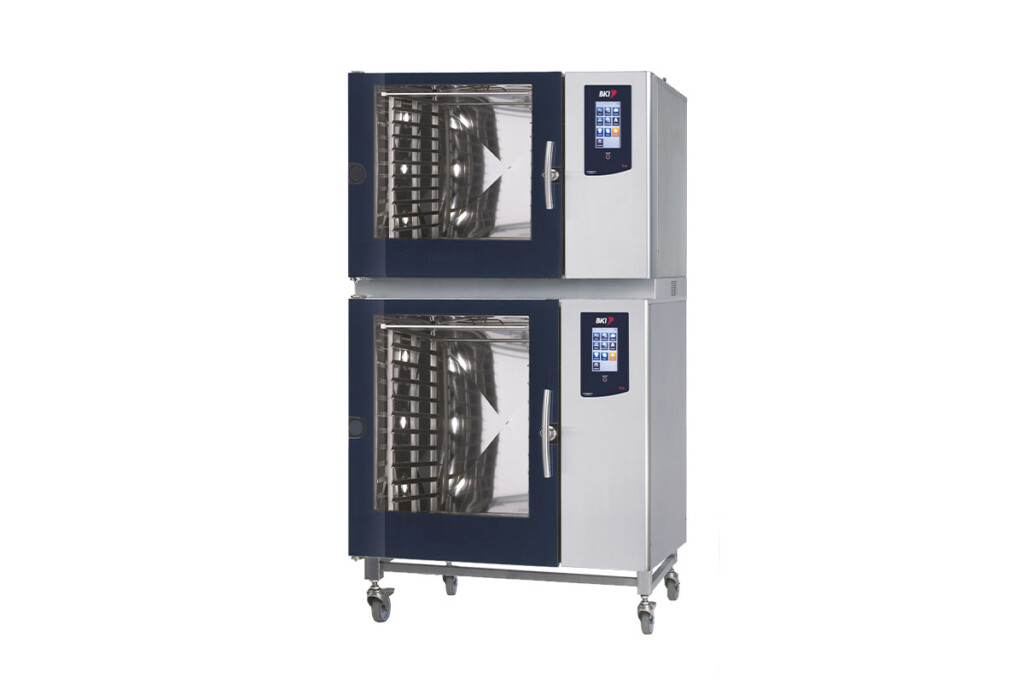
BKI
Model
CBKI-62-102E
Description
Choose to either cook manually, use preprogrammed recipes, or use the SmartChef feature, which automatically selects the optimum settings for an effortless cooking process.
Website
bkideas.com
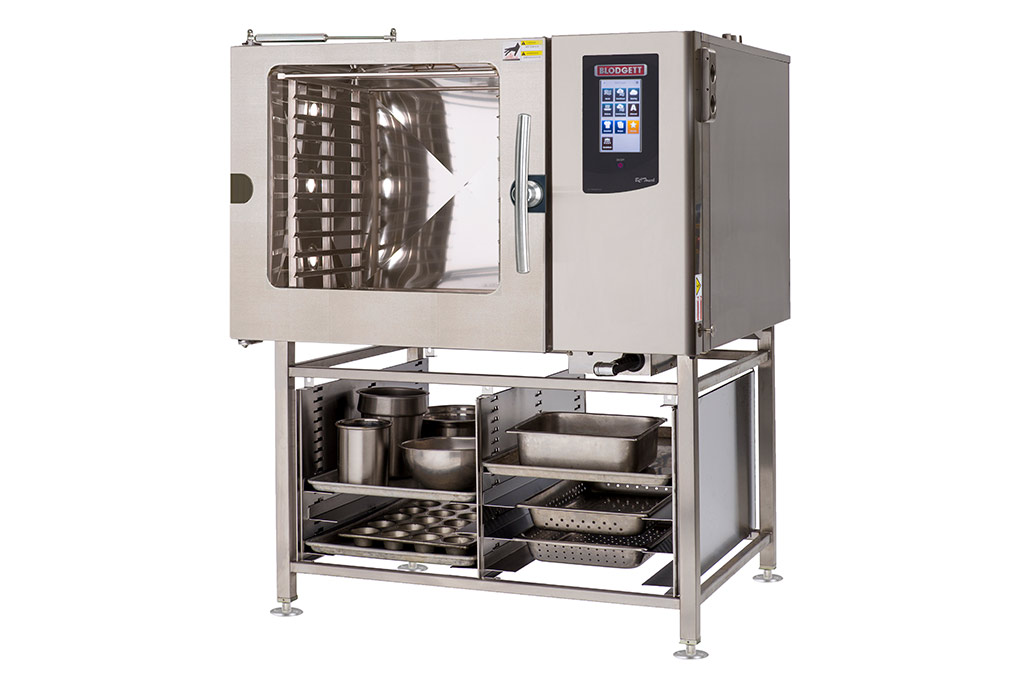
BLODGETT
Model
BLCT-62E-M
Description
This marine version comes with a spring to prevent the door from slamming or opening in rough seas and the flanged feet securely bolt to the deck.
Website
blodgett-combi.com
RELATED CONTENT
- Advertisement -
- Advertisement -
- Advertisement -
TRENDING NOW
- Advertisement -
- Advertisement -
- Advertisement -

